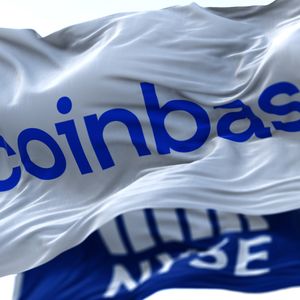Centralized exchanges like Binance and Kraken manage limit order books off-chain. These are orders to purchase or sell an asset at an optimal price in contrast to market orders, which execute at the current market price. Managing limit order books on-chain in DeFi is costly due to the sheer volume of orders. Another downside of DeFi is the inability to apply TradFi's dealership model, where dealers use asset inventories in OTC trading, which involves establishing trustworthy relationships. Anonymous transactions in DeFi render such intermediation unfeasible, and what's more, it runs contrary to the intermediary-free ethos. Decentralized exchanges (DEXs) consequently resort to automated market-making to leverage limit order books and the dealership model. In AMM protocols, liquidity providers (LPs) deposit a pair of assets for traders to swap and create a liquidity pool. The trader pays a fee for each swap proportional to the swap amount that the LPs receive. Obviously, traders opt for a highly liquid asset pair (with higher asset reserves) because the risk of slippage is lower. Higher slippage leads to a higher risk of price manipulation and worse execution prices for large trades. This is disadvantageous to low-trading-volume pairs because LPs have little incentive to provide adequate asset reserves, as they stand to receive lower fees. Hook contracts as a feasible solution The risks are perpetuated as AMMs apply the same pricing algorithms to all users, regardless of their trading volume, loyalty, liquidity contributions, etc. Until recently, DeFi users experienced identical trading processes, with pool customization limited to the protocol's default features. Everything changed with the introduction of hooks - externally deployed contracts that link to a liquidity pool. When a specific event occurs, they execute custom code. Hooks give active traders and loyal token holders personalized incentives, deploy advanced incentives trustlessly without custodial risk, enable dynamic fees, provide modular DeFi infrastructure with data-driven dynamic logic, automate rebalancing logic without compromising security, and offer custom oracles. To this end, the partnership recently announced by Brevis and PancakeSwap has transformed how DEXs interact with users. Brevis' advanced zero-knowledge proof technology powers an integration to bring hooks to PancakeSwap Infinity (formerly PancakeSwap v4), providing users with programmable, trustless DeFi experiences. It enables complex off-chain computations that are verified on-chain, maintaining L1 security standards while delivering powerful features at a fraction of the cost. Pool deployers can easily set up, launch, and manage hooks on the Brevis Portal. They can create hooks using Liquidity Book AMM or Concentrated Liquidity AMM pool types, configure VIP discount tiers based on historical data, and introduce dynamic fee structures within BeforeSwap hooks, improving the user experience and making DeFi trading more flexible. Brevis and PancakeSwap have launched Trading Volume Discount and Token Holder Discount hooks. The former reduces swap fees for traders who accumulate a higher trading volume within specific pools over a period of time without requiring staking or manual verification. The latter enables users to receive automatic fee discounts based on holdings of specific ERC-20 tokens. They can configure discount tiers within the Brevis Portal, with attestation proving eligibility trustlessly. PancakeSwap's router fetches the attested data intelligently, calculates the best swap path, and applies discounts in real time. How hooks work to benefit users Hooks achieve the benefits described above through callbacks, meaning hook logic is called before or after certain events take place. The logic is called after the user links a hook contract to the liquidity pool. In DEXs like Pancake Swap, custom logic can be called before or after initializing a pool, before or after an LP modifies a position (i.e., reducing the number of tokens they have provided or adding more), and before or after a swap or a donation. Hook callbacks allow protocols and developers to define custom trading logic without forking the entire DEX and establish pools that give loyal users better rates. Hooks preemptively analyze a transaction and cancel or redirect it if it looks like front-running. Dynamic adjustments of swap fees in volatile markets reduce slippage for users. A user might want to buy an asset periodically instead of in a single large transaction to benefit from price movements. Before the introduction of hooks, they had to make each swap manually. With hooks, they can do this using a time-weighted average market maker. To reduce the risk of front-running by MEV bots, the hook processes the respective orders with priority over other transactions in the pool. Transaction fees are typically static, meaning they're determined when the pool is created. They can be flat or correspond to a portion of the transaction value. We can use a hook called before the swap to render fees dynamic rather than static. One would want to adjust the fees during periods of market volatility to avoid impermanent loss, where the asset value becomes lower than the initial deposit's market value. Hooks make it possible to increase swap fees to protect liquidity providers from risk. Fees can be reduced when volatility is low to encourage users to transact. We mentioned limit orders at the beginning. Traders face a higher risk of slippage when a liquidity pool is highly volatile, or liquidity is low. Hooks can be used to reduce this risk by placing limit orders in a liquidity pool. Slippage refers to the difference between the actual price at which a trade is executed and its expected price. The hook contract is executed after each swap to make a limit order in a liquidity pool. Before the order is executed, the contract checks if the asset's current price is within the order's execution range. Disclaimer: This article is provided for informational purposes only. It is not offered or intended to be used as legal, tax, investment, financial, or other advice.

















